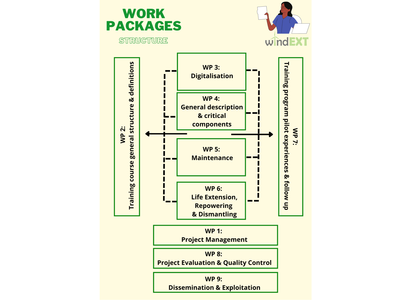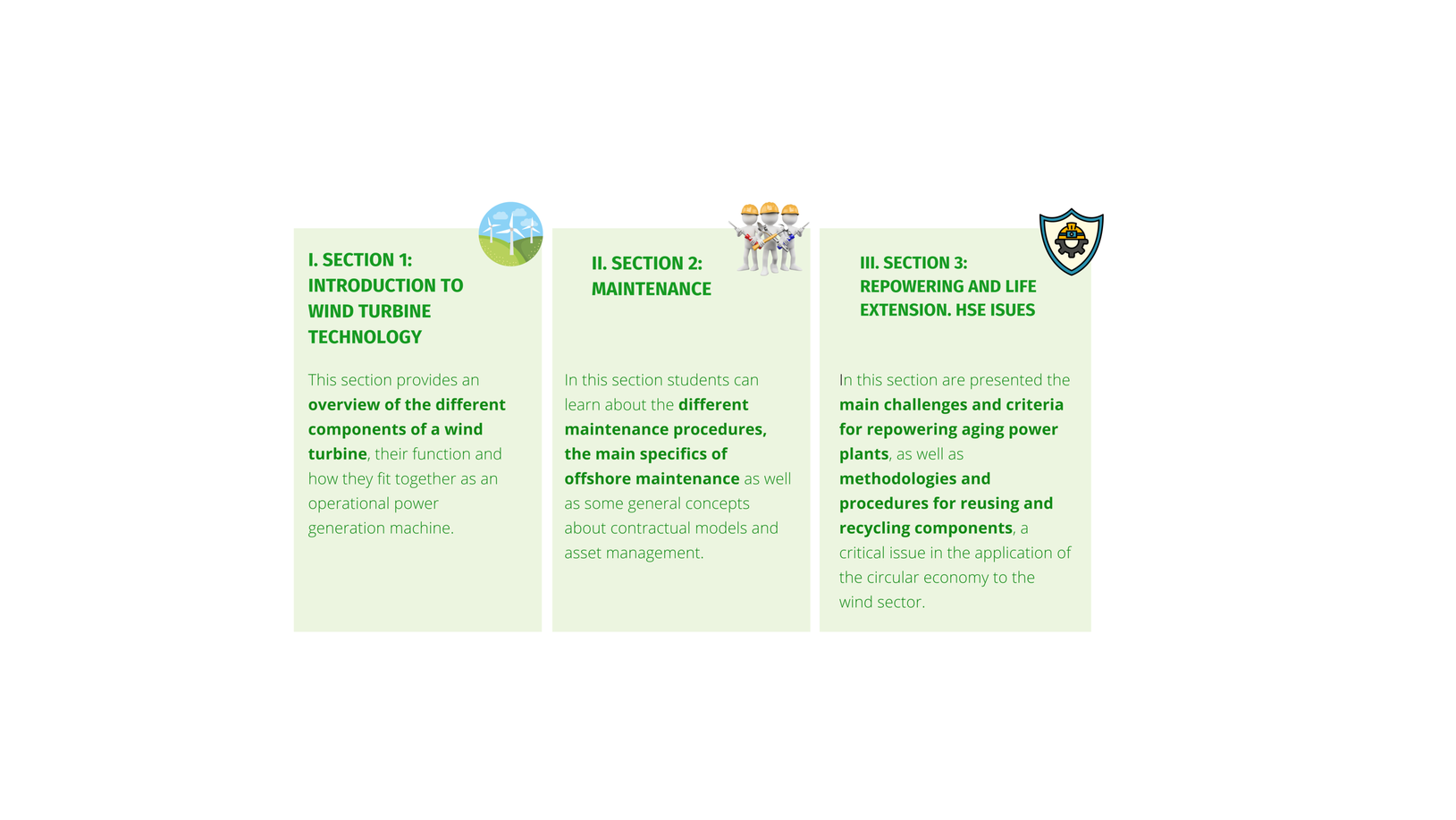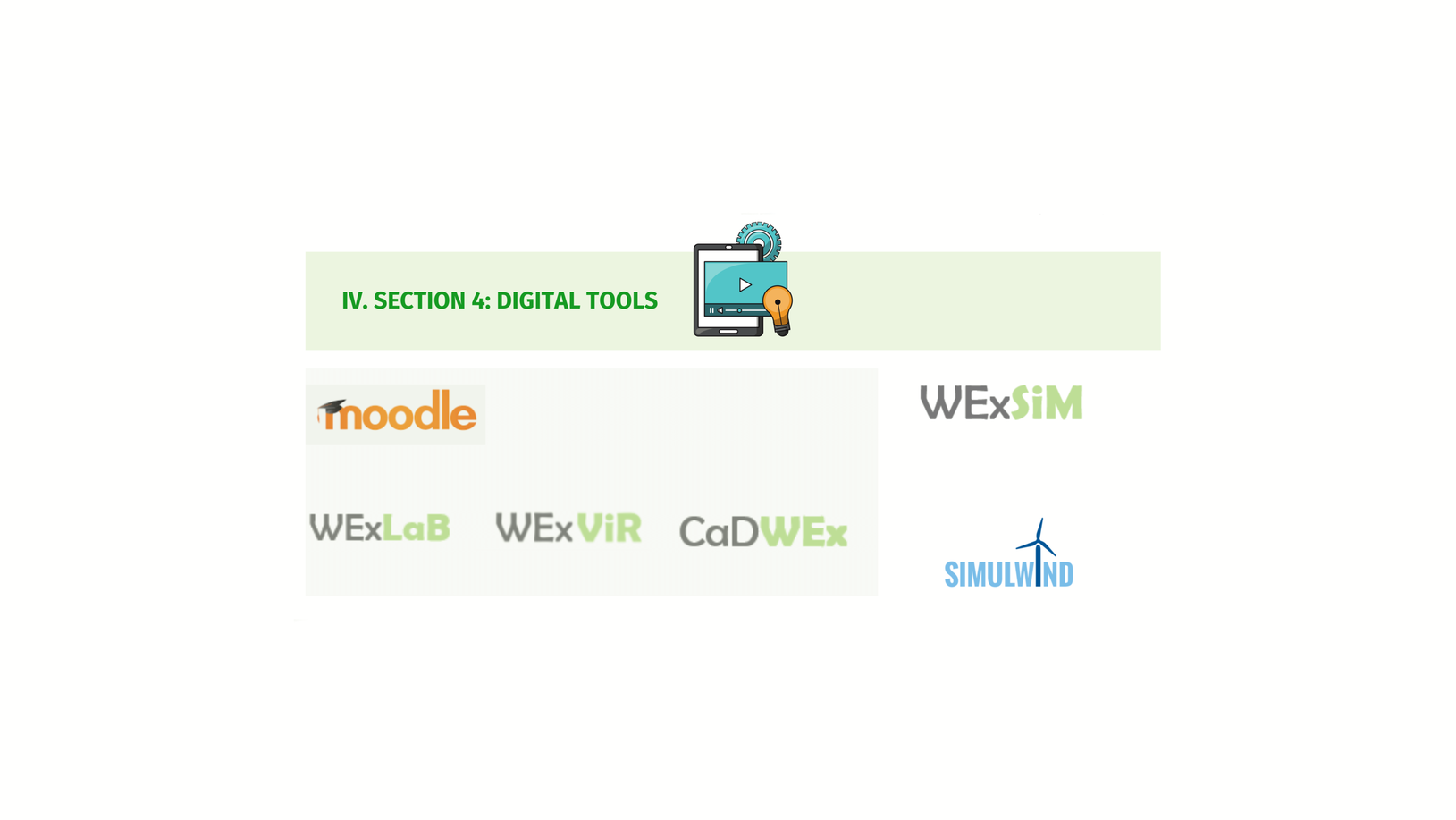
WINDEXT is organized as a training course with a detailed lay-out where the contents and the different digital tools will be integrated. The initial structure is then based on the experience of the participants and it is addressed not only to pure maintenance but also to contractual, metrics and HSE issues.
The project is organized in 9 work packages, 4 are addressed to the contents elaboration and digitalization, 2 to refine the course structure and validate the outcomes and the other 3 to management, dissemination and quality control.
The general training goal of this project is the combination of the following elements:
• Development of the course modules in terms of content and structure, which will be different for different target groups (technicians, operators, etc.).
• Definition of teaching techniques, approaches and evaluation methods
• Evaluation of business models based in new opportunities (ie: digitalisation, life extension, reuse of components, etc...) as well as the best approaches to reach to the market.
More specifically, the project aims are the following:
• To teach on the use of digital tools to improve maintenance
• Get to know about the methods to evaluate the factors affecting to the loss of availability of the wind farms and the subsequent loss of incomes.
• A better comprehension of the use of simulators and digital approaches for maintenance and the life extension as well their validation in real conditions, before to enter in the companies who are using their own instruments.
• To present the contractual models and KPIs to follow the results currently achieved
• To select the best procedures to dismantle a wind farm regarding the final use of the WTGs and the components.
• To learn about the most appropriate methods for the recycling or/and the reuse of the machinery, blades and main components
• Diagnosis procedures to evaluate the situation of the different components.
• Recommended different types of logistics and spare components supplies.
• Procedures to evaluate the best business opportunities in the usually complex world of the maintenance
• To reinforce the commercial strategies to answer the market needs
The main target groups are the training centres in the EU, OEMs (Original Equipment Manufacturers) as well as ISP (Independent Suppliers Companies) related to maintenance activities.
The partners have a great presence in their own markets to promote and disseminate the results of the projects. The introduction of standard contents is a clear benefit for the sector because it will help to integrate rapidly in the market the professional once they left the teaching centres. The wind sector applied in the past methods learnt from the industry in general and only in the last years have developed their own methods. This project intends to consolidate them.
On the other hand, the use of digital tools is becoming quite common for some manufacturers but is quite unusual to use them in a general approach as proposed in this project
.
TU Delft: the target groups that will benefit will include: masters and bachelors students, wind farm operators and OEMs. The project outputs will allow these target groups to make informed decisions on the operation, monitoring and control of wind farms, especially offshore.
The growing international RSC network of vocational schools will benefit from the curricula developed in the project. The established training programmes can thus be updated, and vocational training can be better adapted to the requirements of the market.
Professional training service providers gain access to the developed curricula and can thus more easily develop a needs-based training offer for the industry.
Manufacturers, suppliers, independent service providers of the wind industry, in particular SME's without their own training capacities, will find it easier to obtain tailor-made training for their own employees through this project.
Finally in the case of Uruguay, in 2012 was created the Technology University UTEC to educate professionals in areas related with the new green economy among them solar and wind energy, this was the result of a robust consultation process including policy makers, academia and private sector. First batch of students started in 2016, nevertheless, facilities are underequipped, certification of professionals is not in place and there are facing great difficulties to hire qualified teachers. For the moment workers are mainly trained on the job. CEFOMER was established in 2018 as a specific training centre, for certification of professionals working in this field.
The project has produced a standard training course based in a MOODLE platform where all the contents are integrated as well as the different digital tools. The purpose of the consortium is to promote the use of either the course as a whole or some independent modules or tools, serving always as practical basis of the theoretical teaching.
The structure of WINDEXT course is based on four sections each one with their different modules:

